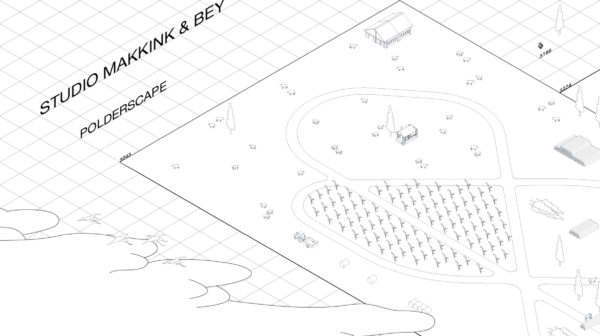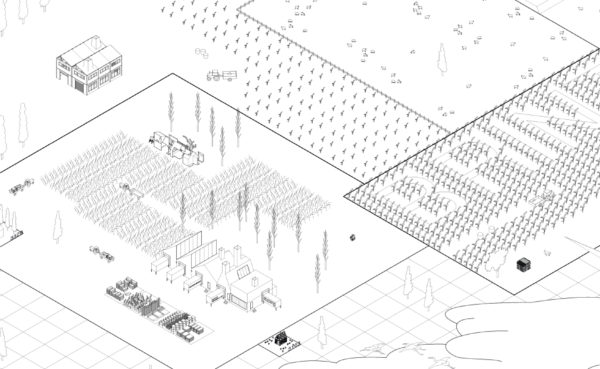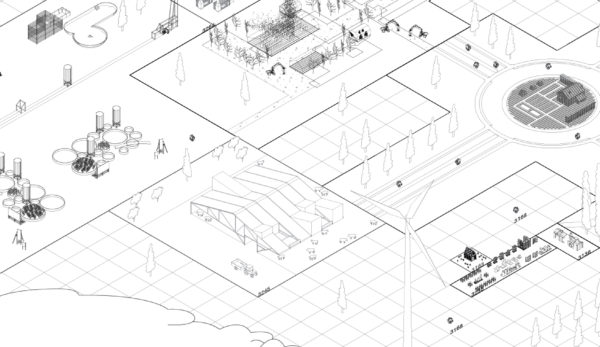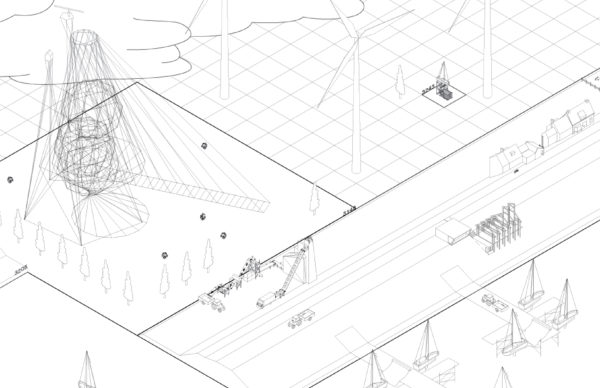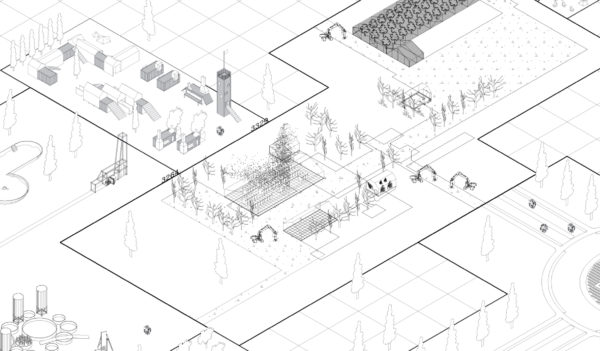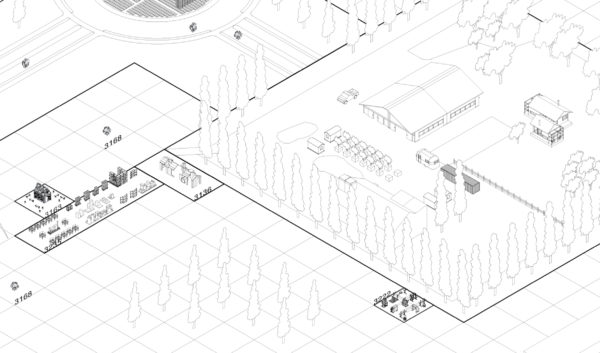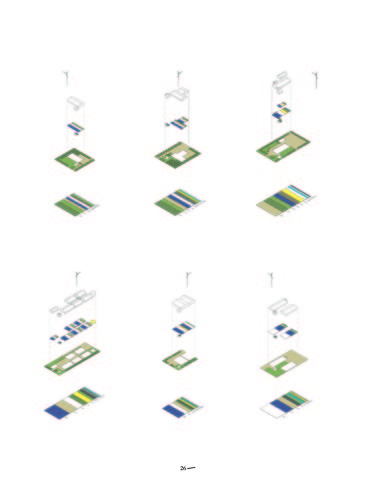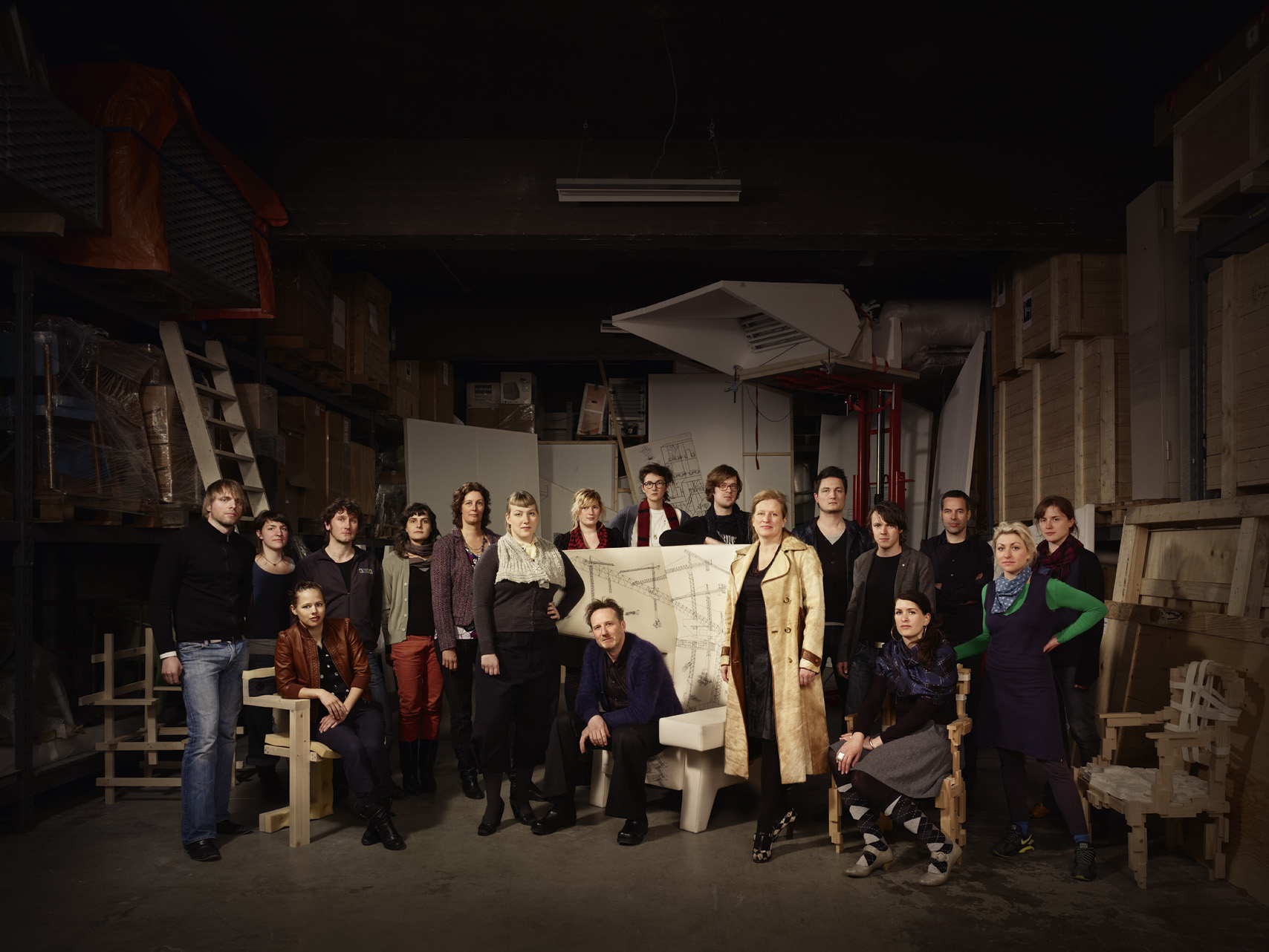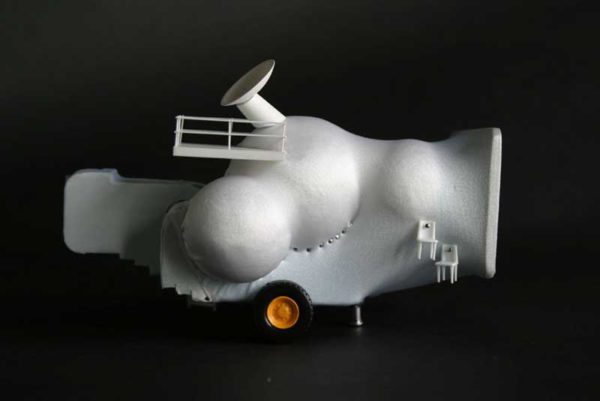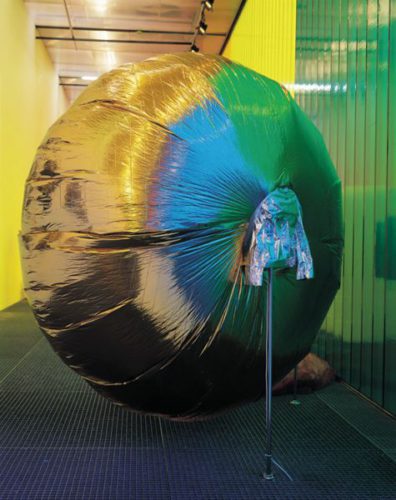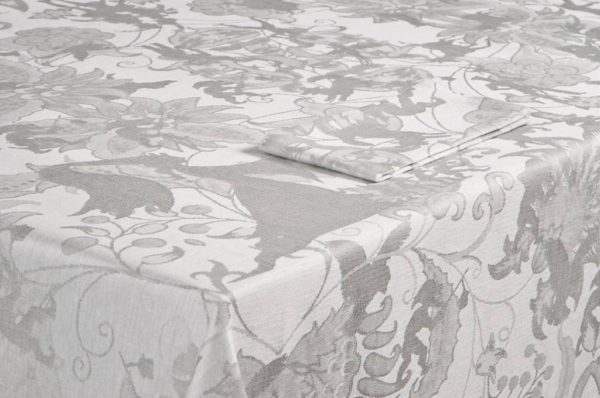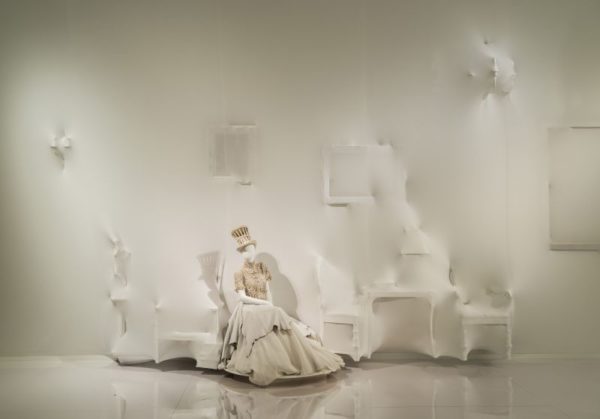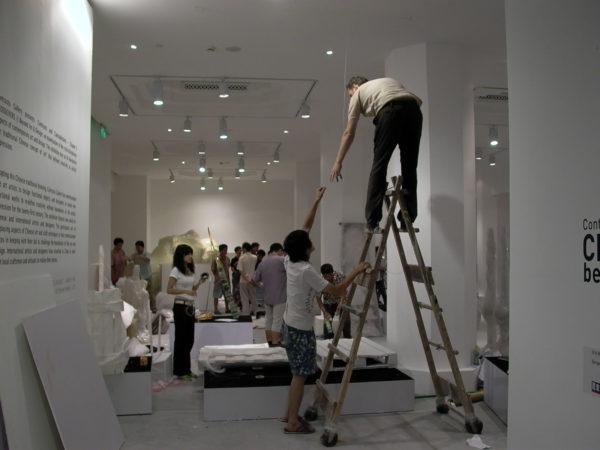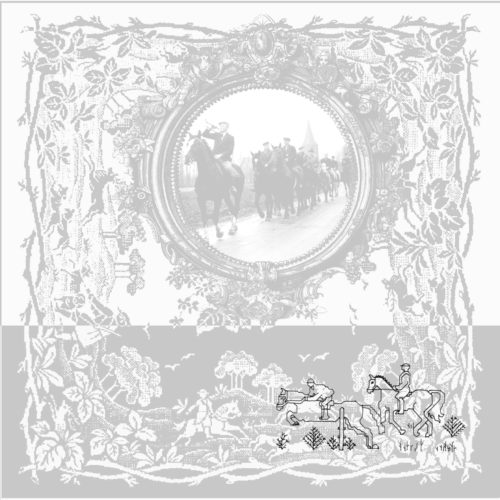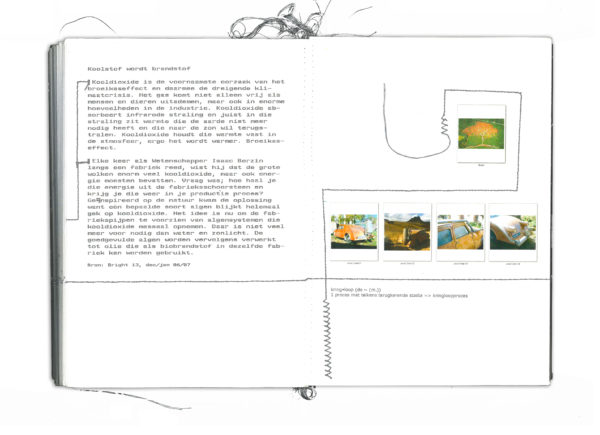This is the place to make it happen
see August 2012 saw a week-long summer school on the Studio Makkink & Bey farmyard, gazing across the broad landscape of the Northeast Polder, walking around in overalls, using a compost toilet and bivouacking in a converted workman’s hut. Students at the Academy of Architecture Amsterdam and the Eindhoven Design Academy took up the challenge.
The monotony of the Northeast Polder landscape is something I really appreciate. It must have something to do with my background in architecture. Absolutely everything in it is designed. The polder was reclaimed in 1942. It’s a utopian landscape. It’s the twelfth province, where an equal number of people of all faiths were supposed to come together from all corners of the compass. The entire design is based on the number. The land is divided into plots of is 24 hectares, and the villages are twelve kilometres from the provincial capital Emmelord, and six kilometres from each other. Everything on the polder is on a large scale, and that’s reflected in the size of the fields, the agricultural equipment and the barns.
I come from in Gelderland. It’s a river landscape; old country. My father was a farmer. I know all about working in small fields. My father’s farm was built in 1600-and-something. He came out of the time of reconstruction after the war. He believed in the future. He always wanted to move forward. He was the first one to have a tractor, and he kept on bringing more technology into the house. He kept on modernising the farmhouse until the Heritage preservation people came along and told him to reverse all his changes. ‘That’s that, then,’ I remember him saying.
I’ve also got a problem with that rhetoric about going backwards. The ditches in Gelderland were dug straight and now they have to twist and turn like they used back in the distant past. A faux-traditional landscape. The good old days.
CREATING IN THE POLDER
My partner Jurgen and I bought a farm here in 2005, with 100m2 of land. A farm demands a huge amount of input. It has to keep on flowing. That first winter Jurgen and I were sitting at the table together, lit by a single light bulb, and I thought, ‘This isn’t going to work. I’m not going to survive this.’ You have to keep everything on the move, mentally and physically. That’s why we bring people in, including students from the academies. Jurgen and I both work in education. All those young people with all their crazy ways – it’s a huge gift to be able to experience it all.
Lonny van Ryswyck and Nadine Sterk, now working together as Atelier NL, got the opportunity to come here and work for two years after graduating. Others followed later. I believe that everyone has a right to a vacuum, to distance themselves from reality for a while. You get the opportunity to come up with all sorts of things at the academy, and it’s great if you can then take your next step after completing your studies, if you can move on from where you finished.
SUMMER SCHOOL
I like the idea of creating a shelter from the world. I believe in slow growth, and letting things develop. That’s how I see the summer school. We’ve created a framework, and it’s up to the people who come here how that gets fleshed out. The 13 students stay overnight here on the farmyard, that’s one of the preconditions: ‘This is the place where you’ve got to do it.’ It’s a moment to completely zoom out, just like Ray and Charles Eames do in their film Powers of Ten, when they zoom in from somewhere in the universe to the Earth and people picnicking by a lake in Chicago. By zooming in, I don’t mean getting an idée fixe. If you can concentrate, you can focus and then broaden your gaze from there. You can zoom out from this miniature world into the big wide world.
At the Academy, almost everything happens at the computer or in your head. Here we work with our hands. We split the students into three groups, and each group gets a standard package: four of the large wooden white plastic agricultural sheeting and a pair of overalls each. Then they were assigned to working in groups as a ‘utilities organisation’. In school, there’s much more of a focus on individual development, and besides that it’s interesting to see Academy of Architecture Amsterdam people and the Design Academy Eindhoven people getting to know each other.
THREE UTILITIES
The idea for these utilities organisations arose out of the plan we submitted to Stroom Den Haag. We initiated a new kind of urban design for the Erasmusveld, a wasteland urban site in The Hague that’s going to be developed. Usually, urban development is just a matter of clearing everything up, laying sewers and foundations and building houses. The houses are then sold off, and people go and live there and get to know their new neighbours. We wondered whether it might not be a good idea to turn that process on its head and take as the starting point the community of people who want to settle there. So we looked for people to come together in utilities organisations, like a compost organisation, a water organisation and an energy organisation – people who could design and maintain their own public facilities. You might end up being able to make exchanges between the organisations, or perhaps market your products – just like here on the polder, where everybody sells their products at the roadside. Or they could barter. It’s a perfect time for it. In Spain, the crisis has inspired a lively barter economy.
At the summer school, students form three ‘utility companies’: Clean Water, Energy Path and Compost. The students embark from out of their own personal interest in something related to the polder. Personally, I’m interested in tackling water: our water bill was shockingly high – especially when you realise that two-thirds of the rainwater is pumped out of the polder! The students make their own purification systems and composting systems. They can check out example projects on the Internet, because you always have to connect with what’s already there. Then you can develop things more deeply for the polder specifically.
CLUTTERING THE LANDSCAPE
I brought the students into contact with the modern farmers in the area. The students were surprised about how approachable they were. They’re true entrepreneurs. The third generation – the grandchildren of the pioneers – is taking it over. I like seeing how they can work on a big scale, but also get involved on a small scale. The chicken farmer where we were has got 48,000 birds, but still, every morning, he has to go into the stall to pick out the dead ones and pluck them. It’s important to make connections, to see that everything has to do with everything else. There’s a consequence to everything. Food has become so cheap. We spend about a fifth of our income on food nowadays, but it used to be about third.
We’ve got kinds of stuff from old exhibitions stored around the farmyard, and the students can use whatever they want of it. Nowadays, it’s often cheaper to throw things away and buy a replacement than to repair or recycle it. I want to show it’s possible to do things differently; show that the world can be different.
Until recently, you’d find stuff that was in a kind of purgatory, stuff that was waiting to be recycled. It’s similar to in Belgium where you’ll come across those wachtgevels, blind facade walls waiting to have a house built against them. Every farm had its piles of rubble and old timber. That’s all gone now. The government is coming down hard on it. They’re out to stop the ‘cluttering up’ of the countryside. I think that’s such a horrible phrase. You walk onto any farmyard nowadays and it’s like a well-tended park. It’s all so terribly neat and tidy. It’s all supposedly because of food safety. But it’s an illusionary safety to my mind. Everything’s so polished. We’re living in an Ikea world.
Horse and cart
Starting in the 1990s, when we architects were working on a masterplan from a helicopter perspective, I began working with SLOOM, in 1999, together with Herman Verkerk from Event Architecture. We wanted to develop slow growth models based on participation. We wanted to get back to making things ourselves. Herman had a little rural oasis in Noordwolde, in de Head of Overijssel area, where he built a house from scratch. I decided to travel by horse and cart from the furthest point of Groningen to Noordwolde, going past Blauwestad, a project where hundreds of hectares of agricultural land were flooded to lure people living in the Randstad conurbation (Amsterdam, Utrecht, Rotterdam, The Hague) to Groningen for recreation – it was a complete failure. I wanted to find out what the impact was of this governmental decision. I invited people to come and ride with me for a day on the coach box and tell me their story. Later I worked on Wroeten (Toil), a television series by Arjan Ederveen about organic gardeners. It was filmed at Herman’s place in Noordwolde. You mark out your world with pickets and expand from there.I really believe in that. You have to start somewhere and then expand. Don’t be overambitious at the start, otherwise it will bleed to death. We started small here too, partly for financial reasons. A limitation can be an interesting factor.
Childhood dreams
The older I get, the more I realise I’m occupied with just one thing: fulfilling all my childhood dreams. I wanted to be a farmer. I wanted to potter about in the farmyard, to be totally free in that protected world. But I wanted to be an astronaut, too, to be able to zoom out and see the Earth as a tiny blue sphere. I’ve been flying, paragliding and skydiving since the 1990s. My journey with the horse and cart was the counterpart of that. It’s good to walk the earth, too, to walk through the landscape.
Women role models in the Capita Selecta series
I’ve invited only women to speak at the Capita Selecta lecture series. I’ve been teaching a lot since the 1990s, in Belgium and the Netherlands. About 50 to 60 percent of architecture and design students are women, but only ten percent of practising architects are women. The most talented graduates aren’t working anymore. They’ve got a family and three kids to bring up. But I think you need to keep tapping that other part of itself. I don’t think you can withdraw completely from your own qualities – partly for society’s sake, but primarily for your own. Women often do all the hard work and let their man take the spotlight. It’s not like that with Jurgen – he pushes me forward. I’ve got plenty of good women who can set an example, too, and I’m keen to have them speak at Capita Selecta. They can serve as role models for other girls girls – and the boys too, of course.
– By Hester van Hasselt, as published in ON AIR 5 (2012)

